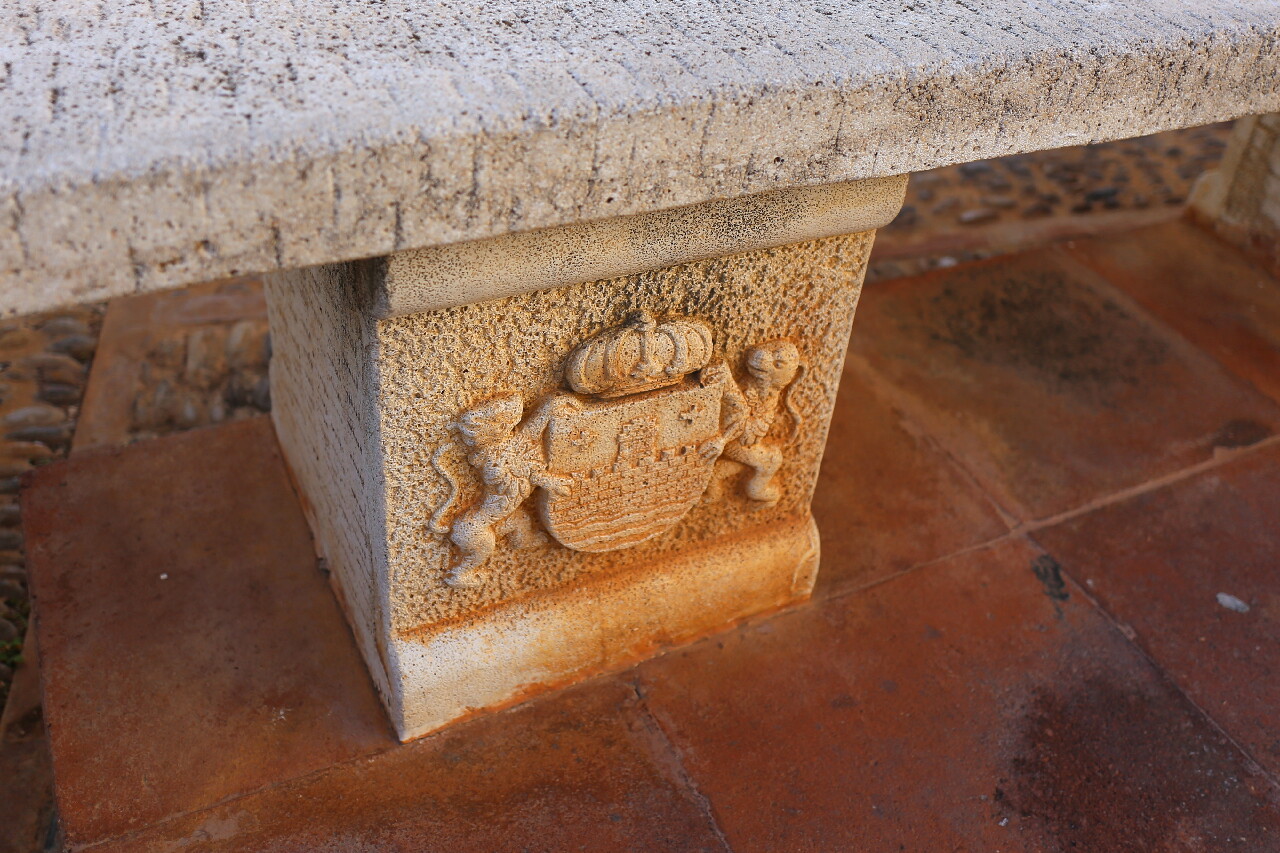Church of the Ermitana, Peñíscola
On the north side, the wall of the castle of Pope Luna is adjacent to the Church of Our Lady of Ermitana (Iglesia de Nuestra Señora de la Ermitana, Valen. Mare de Déu de l'Ermitana). Previously, there was a cemetery with a small chapel. According to legend, the chapel was built in the 6th century, for the image of the Virgin brought to Peñíscola by Saint James (Sant Jaume). During the invasion of the Moors, the statue was hidden in a mountain cave, for which it received the name Eermitana (hermit). Now this relic adorns the altar of the church.
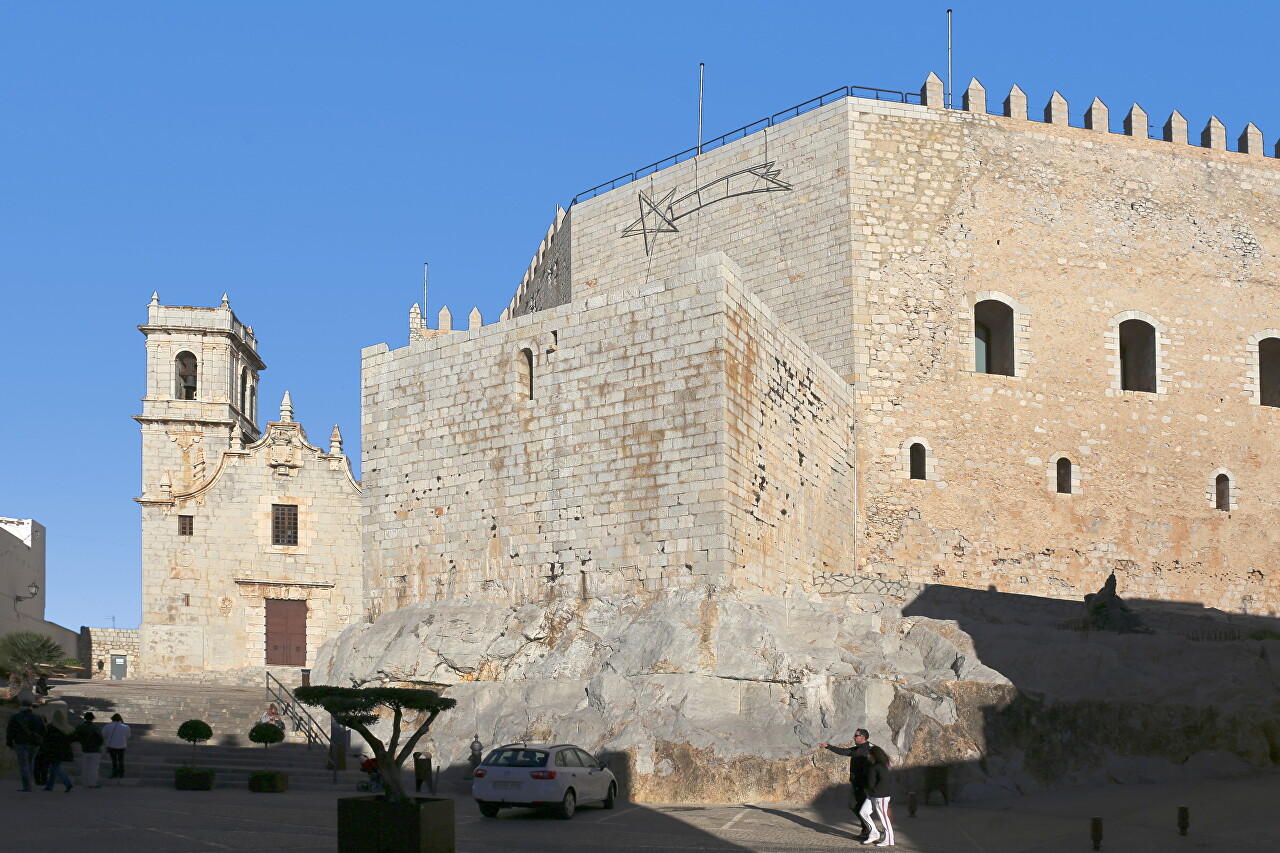
The church was built from 1708 to 1714, in the era of King Felipe V, so the pediment above the main portal is decorated with his coat of arms. The building has thick walls and small windows, which suggests that it has a defensive significance. The portal is decorated with stones, on which you can see reliefs with images of military symbols: cannons, drums, banners. This decoration is unusual for Catholic churches.
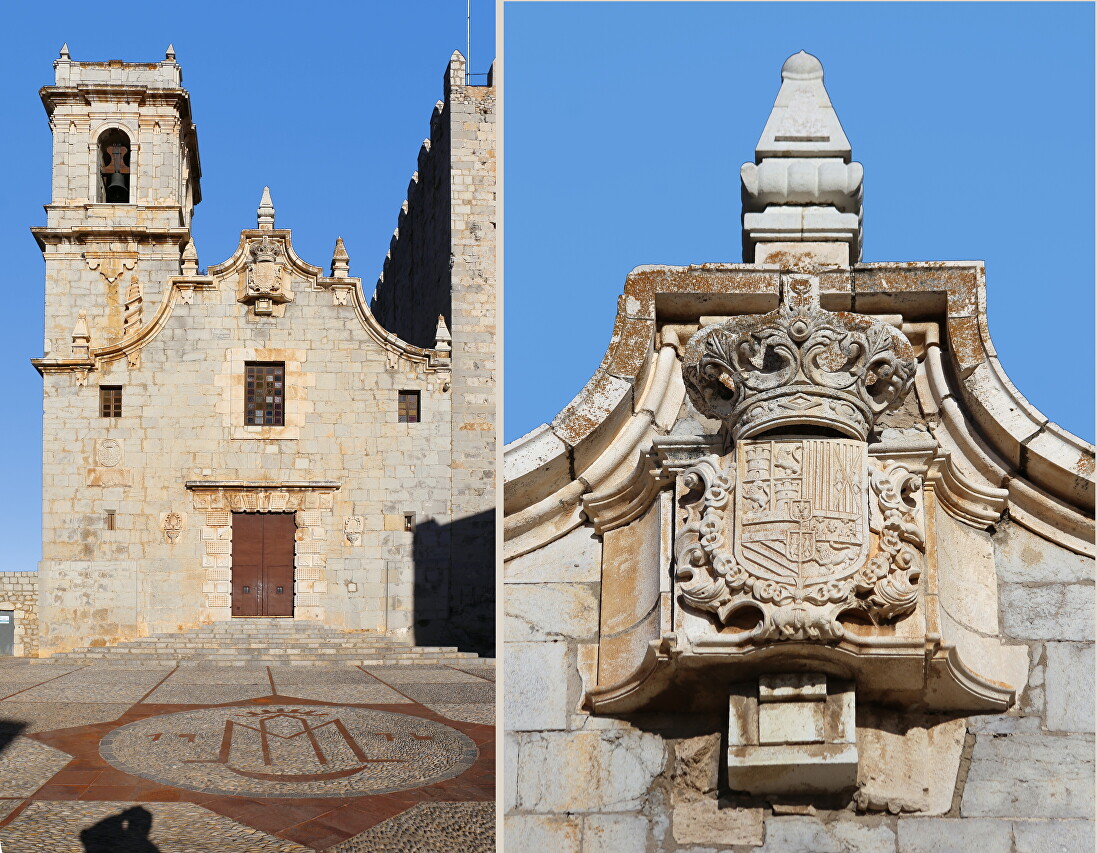
On the right side of the facade, you can see the coat of arms of the military governor of Peñiscola, Sancho de Echevarría, and a memorial plaque stating that the church was built under his direct care, as well as the date - 1712. On both sides of the portal there are two medallions with images of palm trees.
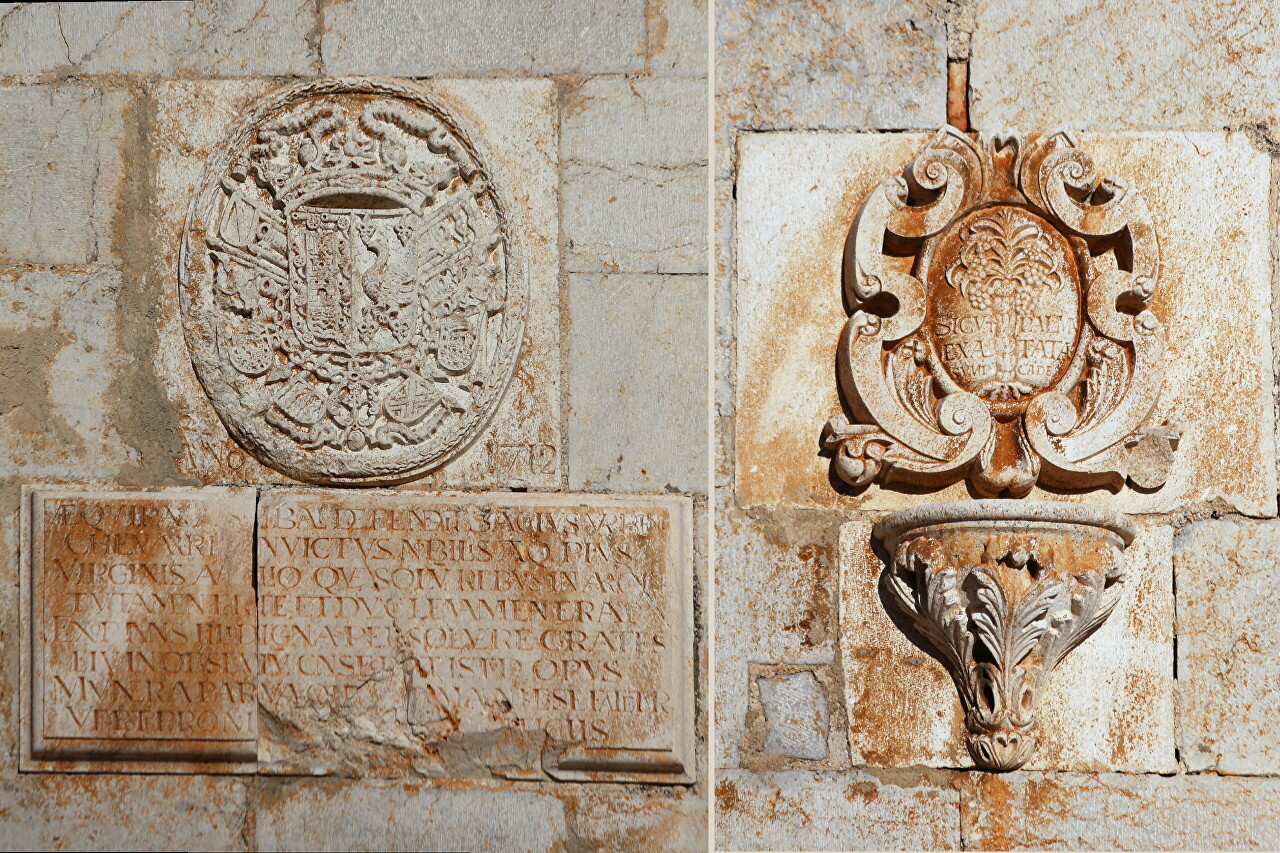
The bell tower of the church has the same height as the fortress wall, the upper platform with stone parapets in case of an attack could be used to accommodate shooters.
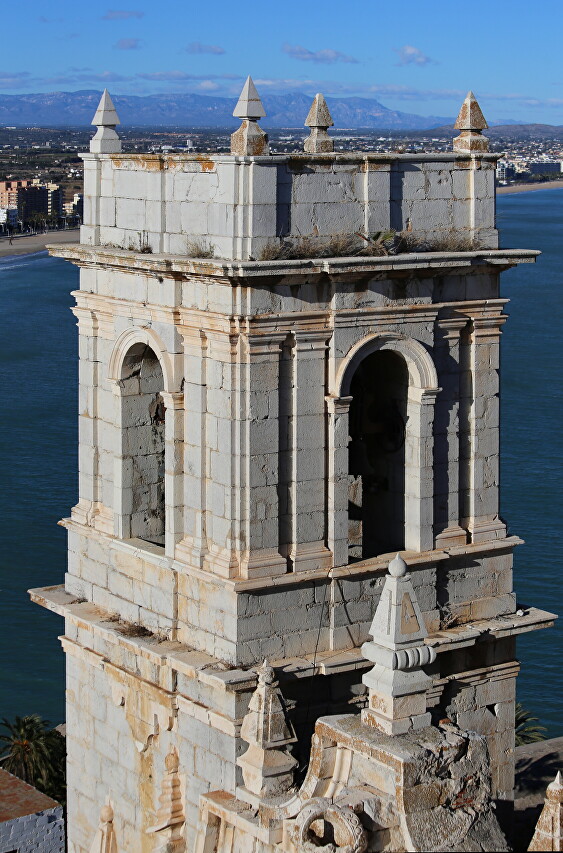
A remarkable fact: in the second half of the nineteenth century, a bell tower was added to the parish church of Santa Maria de Peñíscola, which almost exactly repeats the bell tower of the Hermitana Church.
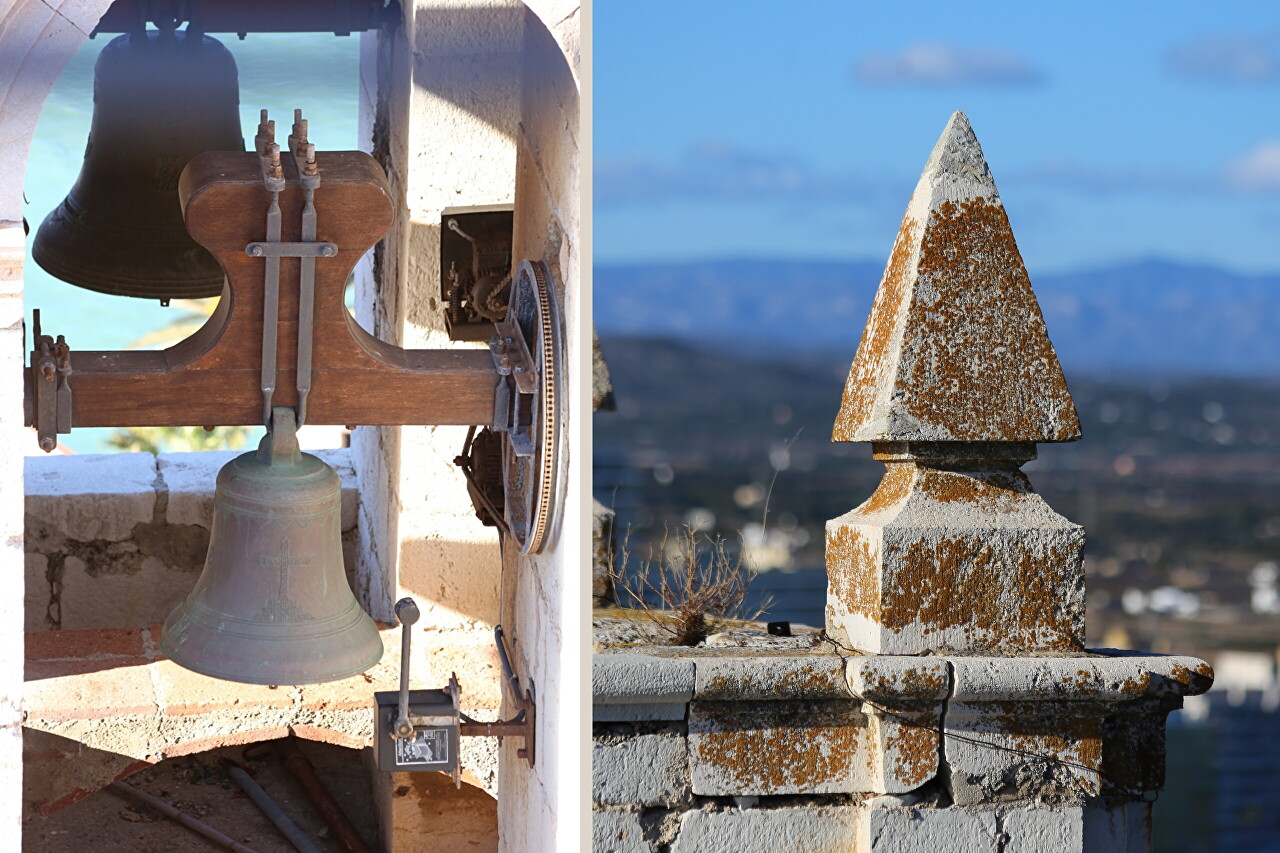
In the square in front of the church, you can sit on ancient stone benches decorated with the Peñíscola coat of arms. Every year, on September 9, the square becomes the center of the feast of the Holy Virgin Eermitana, which was first mentioned in documents in 1677. The performance includes a costumed procession of historical characters and dances, culminating in the construction of the living tower. The holiday attracts a large number of tourists.
